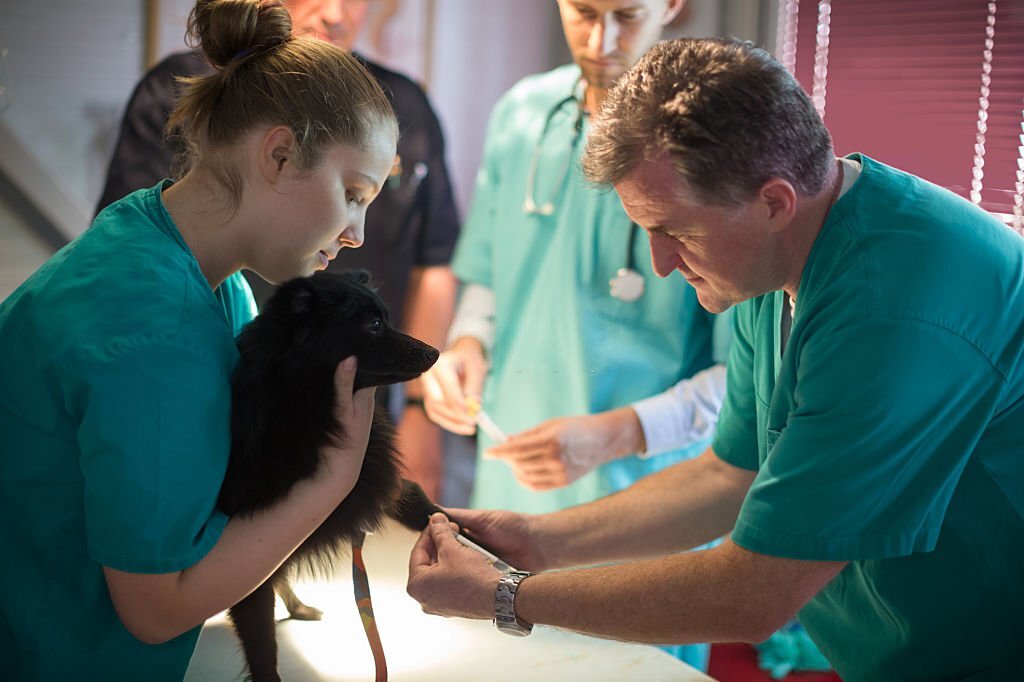Veterinary technologists and technicians are the hand extension of veterinary professionals. They perform a number of tasks to aid veterinary practitioners in their practice.
Research facilities, private clinics, and animal hospitals frequently employ vet techs. However, completing a veterinary technician education, specifically a high school diploma and associate degree program, certified by the American Veterinary Medical Association(AVMA), is a primary condition for becoming a vet tech.
Usually, the vet tech associate degree programs have a duration of two years.
Nonetheless, the Bureau of Labor Statistics states that veterinary technicians should get a four-year bachelor’s degree in veterinary technology from an authorized institution.
Here, we’ll discuss the basic education vet techs should get to start the job and excel in their career.
Required Veterinary Technician Education
The educational requirements for a vet tech differ from that of a veterinary technologist.
After completing a high school diploma, veterinary technicians need a 2-year associate degree to enter the field and start their careers.
They can also apply to a four-year advanced bachelor’s program in animal science or pre-veterinary medicine.
Apart from that, vet techs are allowed to advance their studies through different educational programs and training.
Thus, they can earn CE credits through continuing education that helps them excel in the field and improve their professional abilities.
Here’s the details of complete vet tech education.
High School Diploma
A high school diploma or a GED is necessary if one desires to become a vet tech.
Many students have strong backgrounds in science and health, which qualifies them for training as veterinary technicians.
Usually, high school veterinary technician education takes two years.
Associate Degree Program
Vet tech aspirants must possess at least a two-year associate’s degree in veterinary technology. To find out which programs are approved in the state, students must check with the veterinarian state board.
The best method to ensure your degree is acceptable for a career as a vet tech is to finish a program approved by the Committee on Veterinary Technician Education and Activities.
To enroll in a veterinary technician associate program in a certified veterinary technology school, a minimum of 60 credit hours and 240 hours of on-site internship are necessary.
Practical Learning From The Degree
At an associate’s degree program for future veterinary technicians, classroom instruction is frequently supplemented by hands-on experience in a veterinary hospital.
Students may intern during the last semester of an associate’s program. Mostly, they need to finish the training between the first and second years of enrolment.

During the practical work, interns aid veterinarians by weighing animals, collecting blood samples, and sterilizing surgical equipment.
Moreover, students learn to handle challenging circumstances during the internship to perform their duties professionally.
Vet Tech Certification or Credential
A credential, such as a license or certification, is required before you start a job as a veterinary technician in the US.
However, every state has a unique credentialing test that can be oral, written, or practical. But the majority demands that candidates pass the Veterinary Technician National Exam (VTNE) by the American Association of Veterinary State Boards.
The three-hour test includes 170 MCQs. Anesthesia, imaging, surgical nursing, dentistry, diagnostic, emergency medicine, and pharmacology are a few of the Veterinary Technician National Exam.
Vet Tech Bachelor’s Degree
Unlike veterinary technologists, BS for vet technicians is not necessarily required. But compared to an associate degree, the four-year veterinary technician education may open up more lucrative options for the candidates.
For that, students must consider the expenses and time commitment to get the BS degree.
The bachelor’s degree for veterinary technicians mainly includes the following course line.
- Surgical Nursing for Animals
- Pharmaceutical Training
- Vet Pathology
- Animal Diseases
Specialization
Although specialization is not necessary to start as a vet tech, it creates more job opportunities. Many universities and colleges in the US offer specialized degrees to the vet.
The National Association of Veterinary Technicians in America has designated the following 16 specializations that a vet tech may choose to pursue:
- Dermatology
- Diagnostic imaging
- Laboratory medicine
- Dental
- Nutrition
- Animal behavior
- Clinical pathology
- Clinical practice
- Zoology
- Ophthalmology
- Physical rehabilitation
- Anesthesia
- Surgery
- Internal medicine
- Equine
- Emergency/critical care
Continuing Education
In most states of America , vet techs must complete continuing education courses to keep the certification valid.
The requirements for maintaining or renewing your certification will differ from state to state. So make sure to inquire with the veterinary board in your jurisdiction.
Know Everything About Your Professional Education
From the above discussion, the time it takes to complete veterinary technician education varies according to the state’s and specialty’s requirements.
Typically, completing a training program and receiving credentials takes two to three years. When students enroll in school full-time, an associate degree in veterinary technology usually takes two years to finish.
However, the graduation duration may differ according to the institutions’ programs and course policies. Moreover, it may also need thousands of hours of on-the-job training as well as continuing education courses.
For more information about the veterinary field, visit VetandTech—the best source of researched based data.
FAQs
- Does any state allow vet techs to work without a degree?
Yes. Vet techs that have completed a specific amount of work experience or an alternate training program are eligible to take the VTNE in states including Alaska, Wisconsin, and California.
- How many years does it take to become a vet technician?
You simply need an associate’s degree, which can be earned in two years, to start your career as a vet tech.
- What are the qualities of a competent veterinary technician?
A competent vet tech will be self-aware, patient, courteous, challenging, and compassionate. A strong willingness to study and moralities are also requirements.


